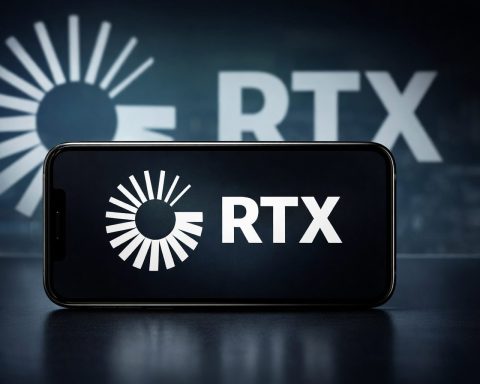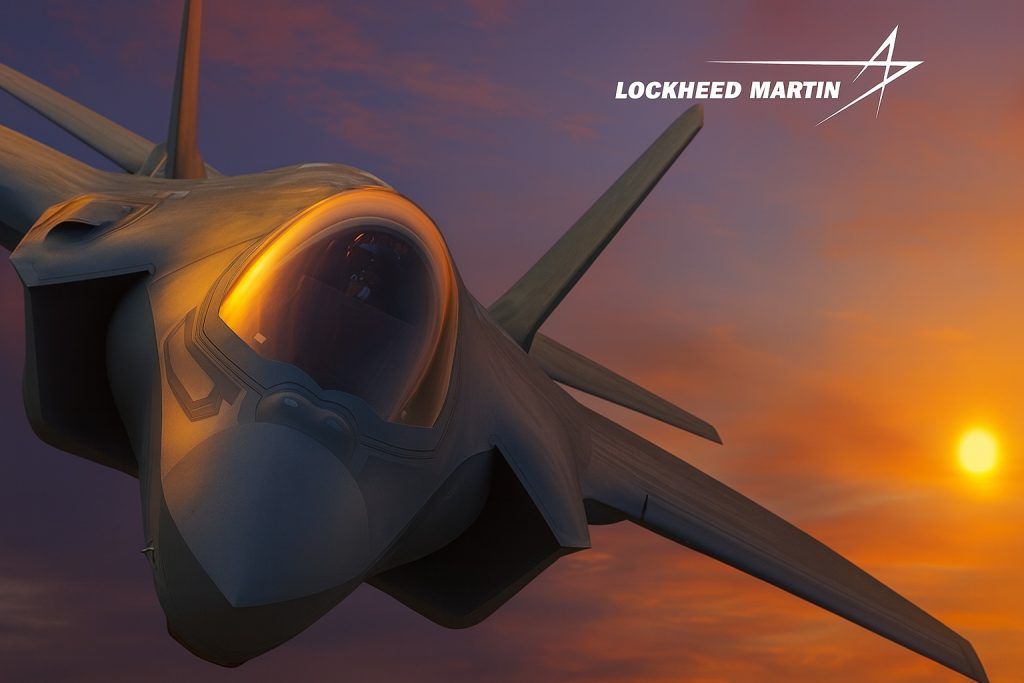- Global semiconductor stocks surged by over $200 billion in market value in early October 2025 as investors rushed to capitalize on booming AI developments [1].
- Nvidia and AMD shares jumped alongside other chipmakers – with Nvidia up ~1.3%, AMD up ~2.8%, and supplier Broadcom up ~1.9% – while memory giants SK Hynix and Samsung Electronics soared 9.9% and 3.5% respectively on the news [2] [3].
- OpenAI fueled the rally after launching a hit AI app and partnering with Samsung and SK Hynix to secure advanced memory chips and build new data centers, sending its private valuation near $500 billion in a recent share sale [4] [5].
- Analysts say fear of missing out (FOMO) on the AI boom is driving the euphoria, as investors brush aside bubble concerns and bid tech stocks to record highs on every positive AI headline [6].
- Nvidia’s $100 billion deal to supply OpenAI with cutting-edge AI systems – one of the largest tech contracts ever – underscores the insatiable demand for AI infrastructure and helped ignite this latest leg of the chip stock rally [7].
- In an unprecedented twist, Intel is even in talks to produce chips for rival AMD, a potential foundry deal that highlights industry cooperation to boost capacity amid surging AI chip needs [8].
AI Hype Reignites Chip Rally
After a brief lull in sentiment, enthusiasm about artificial intelligence came roaring back in early October 2025 – sparking a record-setting rally in semiconductor stocks. Globally, chipmakers added over $200 billion in combined market value within days as investors piled into the sector on fresh AI optimism [9]. NVIDIA looked set to power higher, and fellow AI-exposed names like Advanced Micro Devices (AMD) and Broadcom were also climbing amid renewed spending excitement driven by OpenAI [10]. This marked one of the biggest tech stock booms since the initial ChatGPT craze, reaffirming that AI remains the key narrative propelling markets.
Financial markets had only weeks earlier shown signs of AI fatigue, questioning whether the massive investments in AI would pay off. But that skepticism proved short-lived. “After a brief bout of doubt about returns on AI investment, enthusiasm over the technology looks to be back in full swing,” noted Barron’s in a market commentary [11]. In other words, the AI hype train has regained momentum, and chip stocks are the primary beneficiaries.
OpenAI’s Outsized Role in the Boom
Much of this renewed optimism centers on OpenAI, the company behind ChatGPT. OpenAI delivered a flurry of headlines that upended investor doubts into excitement. This week, it released a new AI tool – a video-generation app called Sora – which shot to the top of Apple’s App Store charts, mirroring the viral success of ChatGPT [12]. The app’s instant popularity signaled that consumer appetite for AI applications remains enormous, reigniting confidence in the AI ecosystem from software to chips.
At the same time, OpenAI announced deals with two South Korean chip giants, Samsung Electronics and SK Hynix, to boost the supply of advanced memory chips and to build out more AI data centers [13]. These partnerships ensure OpenAI can secure critical hardware (like high-bandwidth memory) for its AI models and expand its computing infrastructure. For chip investors, such moves translate to expectations of even more orders for high-end AI semiconductors in the pipeline [14]. Indeed, SK Hynix – a leading maker of the ultra-fast memory used in AI servers – saw its stock jump nearly 10% on the announcement, and Samsung’s stock gained over 3%, reflecting hopes that demand for AI hardware will trickle down across the supply chain [15] [16].
Perhaps most astounding was the news that OpenAI’s private valuation has now ballooned to roughly $500 billion after a recent employee share sale [17]. This staggering valuation (for context, higher than many Silicon Valley titans) signals that major investors see immense value in OpenAI’s future. It also eases concerns about Nvidia’s own huge bet on OpenAI [18]. Last month, Nvidia agreed to an unprecedented partnership, committing up to $100 billion in credit for OpenAI to purchase Nvidia’s AI supercomputing hardware [19]. That deal – effectively Nvidia financing OpenAI’s growth in order to sell more chips – had raised some eyebrows about a potentially circular arrangement. But the fresh $500 billion valuation from third-party investors validates OpenAI’s business, “quelling concerns about Nvidia’s up-to $100 billion investment” in the startup [20]. In other words, outsiders are confident OpenAI can foot the bill for all those Nvidia systems, alleviating fears that Nvidia was overextending itself in an AI bubble.
Nvidia’s supply deal with OpenAI is colossal. By some accounts, it involves deploying 10 gigawatts of Nvidia’s cutting-edge AI systems to OpenAI – an amount of compute power on the order of a dozen large data centers (or roughly ten nuclear reactors) dedicated solely to AI [21]. Industry observers have called it the largest AI infrastructure project in history, cementing OpenAI’s status as a premier Nvidia customer. The sheer scale of this collaboration underscores just how insatiable the demand for AI hardware has become, and it was a key catalyst for the latest surge in chip stocks.
Global Chipmakers Ride the Wave
This AI-driven rally has been remarkably broad-based, lifting chipmakers across regions and specialties. In the U.S. market, Nvidia’s stock ticked higher and AMD rose in tandem, extending gains from earlier in the year [22]. Networking and semiconductor suppliers like Broadcom – which provides critical connectivity chips for AI data centers – also climbed nearly 2% [23]. It wasn’t just the American tech darlings: in Asia, semiconductor firms saw an even more dramatic boost. South Korea’s SK Hynix shot up about 10% and Samsung Electronics leapt 3.5% in a single day, helping push Korea’s Kospi index to record highs [24]. According to Bloomberg data, the combined market capitalization of the Philadelphia Semiconductor Index (SOX) in the U.S. and a key Asian chip index surged sharply to all-time highs amid the frenzy [25].
Crucially, the rally isn’t limited to chip designers alone – it’s also buoying the entire ecosystem of component makers and equipment suppliers tied to AI. Memory manufacturers, in particular, are riding the wave. High-bandwidth memory (HBM) chips from companies like SK Hynix and Samsung are essential for training and running advanced AI models, and investors expect a faster ramp-up in memory shipments to support the new AI servers coming online [26]. As one market commentary noted, “more bits shipped and more high bandwidth memory online generally translate into more GPU deployments,” meaning growth for memory firms goes hand-in-hand with growth in Nvidia’s GPU sales [27]. This symbiotic growth helped propel a worldwide upswing: virtually any stock with exposure to AI development – from chip foundries to cloud server makers – saw increased interest as the AI gold rush spread.
Euphoria vs. Reality: FOMO and Bubble Warnings
The speed and scale of the chip stock rally have inevitably raised questions about market euphoria overshooting reality. Many analysts describe the surge as being driven by fear of missing out. As investors watch AI success stories like Nvidia’s soaring earnings and OpenAI’s massive valuation, they are scrambling not to be left behind. “Tech momentum shows no sign of fading as if gravity doesn’t exist, with headwinds brushed aside and every AI headline sparking bursts of euphoria,” observed Hebe Chen, an analyst at Vantage Markets [28]. In other words, each new AI announcement – no matter how speculative – is met with frenzied buying. This FOMO-driven optimism has largely drowned out cautious voices, at least for now [29].
However, beneath the exuberance, some bubble warnings are beginning to surface. The valuation metrics of chipmakers have climbed to historic highs. Bloomberg’s data show that in Asia, semiconductor stocks are now trading around 19× forward earnings, while U.S. chip stocks on the SOX index are at roughly 27× forward earnings – approaching the peak multiples last seen in 2024’s AI craze [30]. Such rich valuations imply that investors are pricing in years of extraordinary growth ahead. Analysts warn that the rally may face a reality check once fourth-quarter earnings are released and companies must demonstrate actual results to justify the hype [31]. If AI demand or sales fall short of lofty expectations, today’s high-flying stock prices could be vulnerable to a pullback.
Still, many industry experts maintain that the AI revolution is real and just beginning, suggesting any dips could be temporary. “Firstly, Nvidia is the clear leader among chip providers… Secondly, we expect robust demand for AI for the foreseeable future,” wrote Dave Novosel, an analyst at Gimme Credit, emphasizing that virtually every major company is now adopting AI to cut costs or enhance operations [32]. In his view, AI is not a passing fad but a fundamental technological shift driving tangible efficiencies – which “has Nvidia stock holding up well even as other AI-related names pulled back” in previous weeks [33]. This long-term bullish perspective, grounded in real enterprise use cases for AI, provides a backstop of support under the chip sector. It suggests that while valuations are high, the earnings potential from AI could indeed grow into those valuations, mitigating some bubble risk.
Nvidia and AMD: Diverging Strategies in the AI Era
Among chipmakers, Nvidia remains the undisputed leader of the AI boom, and its moves are closely watched by investors and competitors alike. The company’s dominance in AI GPUs (graphics processing units) has translated into explosive revenue and profit growth in 2023–2025, leaving it flush with cash. In fact, Nvidia is projected to generate “well over $600 billion in free cash flow over the next 3.5 years,” according to Melius Research analyst Ben Reitzes [34]. This war chest gives Nvidia enormous strategic options. Reitzes notes that earlier this year analysts thought Nvidia would have “no choice but to announce the biggest buyback program ever” to return cash to shareholders, but now sentiment has shifted [35]. Instead of simply handing cash back, “[CEO] Jensen Huang is going to use cash to invest in his ecosystem to help grease the AI flywheel,” Reitzes writes [36]. In practice, that means Nvidia is plowing funds into initiatives that reinforce its AI platform – whether it’s financing clients like OpenAI, building software libraries, or even acquiring complementary tech companies. By reinvesting aggressively, Nvidia aims to widen its moat: every dollar spent on expanding the AI ecosystem could lock in future demand for Nvidia’s chips and services, creating a self-perpetuating “flywheel” of growth [37]. For investors, this strategy implies Nvidia is playing the long game to secure its AI supremacy, rather than cashing out on a short-term windfall.
AMD, on the other hand, is positioning itself as the credible challenger in AI chips. Long known for its CPUs and as a smaller rival to Nvidia in graphics, AMD has been racing to catch up in the market for AI accelerators. The company’s upcoming MI300 series accelerators target the kind of advanced AI workloads that Nvidia’s GPUs dominate. In October 2025, AMD also made headlines by expanding a partnership with Cohere, an AI startup, to develop enterprise and sovereign AI solutions on AMD hardware [38]. By teaming up with AI software firms, AMD hopes to optimize its chips for popular AI models and demonstrate competitive performance. This is part of AMD’s broader strategy to build an AI ecosystem around its products – from software support to alliances – to entice cloud providers and businesses to consider AMD-powered AI infrastructure.
Perhaps the most surprising development is AMD’s exploration of a partnership with its historical rival Intel. In a testament to how severe the demand for chip manufacturing has become, reports emerged that Intel is in early talks to add AMD as a customer of its foundry business [39]. If such a deal materializes, Intel’s factories would fabricate chips for AMD – a remarkable collaboration after decades of fierce competition. The motivation appears pragmatic: AI demand is outstripping the industry’s production capacity, and even a top chip designer like AMD needs more manufacturing lanes to get its products out. Intel, which is investing heavily in its foundry capabilities, has capacity to offer. Industry analysts see this as a “win-win”: AMD would gain an additional source to produce cutting-edge chips (beyond its current reliance on TSMC), and Intel would secure a major new customer, validating its foundry business turnaround [40] [41]. Such alliances were once unthinkable, but the AI frenzy is reshaping traditional industry boundaries – all in service of feeding the voracious demand for more chips.
Outlook: High Stakes into Year-End
The big question following this October 2025 rally is whether the momentum can hold. In the near term, all eyes will be on the next wave of tech earnings and data releases. Fourth-quarter results (due in early 2026) will be a critical litmus test – they need to show that cloud platforms, chipmakers, and device companies are indeed seeing revenue gush from AI investments to justify the sky-high valuations [42]. Any hint of AI projects being delayed or AI sales growth slowing could jolt the market, given how much optimism is currently priced in.
Investors and analysts are also tracking a few key indicators to gauge the sustainability of the boom. One is the adoption curve of new AI services – for example, how many users and developers flock to OpenAI’s Sora app or similar AI applications. If usage keeps climbing, it will reinforce the need for more backend hardware and cloud capacity. Another factor is the progress of AI infrastructure expansion: companies like Microsoft, Google, and Oracle have announced tens of billions in AI data center projects, and any acceleration or hiccups in those plans will influence demand for chips [43]. Notably, Microsoft has a $30 billion AI infrastructure investment underway in the UK, and Meta (Facebook’s parent) is building a $10 billion AI data center in the US – each project a sign of confidence in AI’s future that directly translates to more server chips needed [44].
The supply side of the equation is equally crucial. Shortages of critical components – especially high-bandwidth memory – have been a bottleneck for deploying AI systems. With OpenAI now partnering directly with memory makers, watchers will see if Samsung and SK Hynix can ramp up output to meet surging orders [45]. Any easing of supply constraints (or breakthroughs in alternative chip technologies) could further unlock the pipeline for AI hardware deployments in 2026. Conversely, if supply can’t keep up, it might cap how fast companies like Nvidia can actually recognize sales, regardless of demand.
Finally, the way Nvidia manages its newfound fortunes will be telling. The company’s decision on how much cash to return to shareholders versus reinvest in growth will signal how confident it is in the long-term payoff of the AI boom [46]. So far, indications are that Nvidia will plow a significant portion into nurturing its ecosystem – a move that could extend its lead, but one that investors will scrutinize for results.
In summary, the October 2025 AI-fueled rally has affirmed that AI remains the driving force in today’s tech stock market. Huge sums of wealth are being created (and wagered) on the premise that AI will revolutionize industries and deliver unprecedented growth for the companies enabling it. The likes of Nvidia, AMD, and their peers are at the center of this narrative, riding a fine line between extraordinary opportunity and exuberance. For now, the AI frenzy shows few signs of cooling – chips are the new gold rush, and everyone is scrambling for a stake. How long this euphoria can defy economic gravity will hinge on the real-world traction of AI in the months ahead. As one expert aptly put it, tech’s momentum is soaring “as if gravity doesn’t exist” – time will tell if and when gravity reasserts itself [47].
Sources:
- Vidushi Saxena, “Global Chipmakers Surge US$200 Billion Amid AI Frenzy,” ElectronicsForYou.biz – Oct. 3, 2025. [48] [49]
- Adam Clark, “Nvidia, AMD Stocks Rise. How OpenAI Is Driving the AI Chip Rally,” Barron’s (via Dow Jones Newswires) – Oct. 2, 2025. [50] [51]
- Annika Masrani, “Nvidia & AMD Stock Gain as Analyst Says ‘Jensen Is Going to Use Cash to Invest in His Ecosystem’,” TipRanks – Oct. 2, 2025. [52] [53]
- Howard Smith, “Nvidia and OpenAI Just Upped the Ante in AI. Here’s What Investors Should Watch,” The Motley Fool (via Nasdaq.com) – Oct. 1, 2025. [54] [55]
- Reuters News, “Intel in early talks to add AMD as foundry customer, Semafor reports,” Reuters – Oct. 1, 2025. [56]
References
1. www.electronicsforyou.biz, 2. www.itiger.com, 3. www.electronicsforyou.biz, 4. www.tipranks.com, 5. www.tipranks.com, 6. www.electronicsforyou.biz, 7. www.nasdaq.com, 8. www.reuters.com, 9. www.electronicsforyou.biz, 10. www.itiger.com, 11. www.itiger.com, 12. www.itiger.com, 13. www.itiger.com, 14. www.tipranks.com, 15. www.itiger.com, 16. www.electronicsforyou.biz, 17. www.itiger.com, 18. www.itiger.com, 19. www.itiger.com, 20. www.itiger.com, 21. www.nasdaq.com, 22. www.itiger.com, 23. www.itiger.com, 24. www.electronicsforyou.biz, 25. www.electronicsforyou.biz, 26. www.tipranks.com, 27. www.tipranks.com, 28. www.electronicsforyou.biz, 29. www.electronicsforyou.biz, 30. www.electronicsforyou.biz, 31. www.electronicsforyou.biz, 32. www.nasdaq.com, 33. www.nasdaq.com, 34. www.tipranks.com, 35. www.tipranks.com, 36. www.tipranks.com, 37. www.tipranks.com, 38. www.marketbeat.com, 39. www.reuters.com, 40. www.reuters.com, 41. www.reuters.com, 42. www.electronicsforyou.biz, 43. www.nasdaq.com, 44. www.nasdaq.com, 45. www.tipranks.com, 46. www.tipranks.com, 47. www.electronicsforyou.biz, 48. www.electronicsforyou.biz, 49. www.electronicsforyou.biz, 50. www.itiger.com, 51. www.itiger.com, 52. www.tipranks.com, 53. www.tipranks.com, 54. www.nasdaq.com, 55. www.nasdaq.com, 56. www.reuters.com








